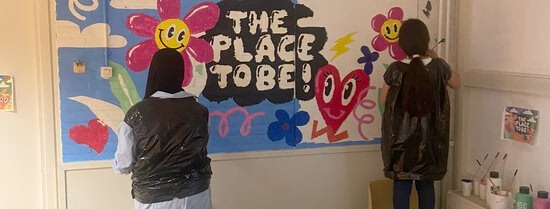Only two young people from the Reyeroord neighbourhood were willing to participate in a research project conducted by the municipality of Rotterdam about their dreams and wishes. Action researchers Els Leclercq, Emiel Rijshouwer, and community networker Ilona van der Laan concluded that they faced a significant challenge. Els explains, "People had no trust in the municipality and even less in science. We had to regain that trust first and then quickly achieve results." The "Right to Reyeroord" project resulted in a youth hub where young people feel recognized and understood.
"At first glance, Reyeroord seems like a normal neighbourhood in the IJsselmonde district with lots of greenery, space, and friendly people," says Ilona, who works for the municipality of Rotterdam. "Even research doesn't depict the neighbourhood as a problem area. This is because the two better neighbourhoods, De Veranda and Oud-IJsselmonde, also fall under IJsselmonde, which distorts the research data at the neighbourhood level. But as a community networker deeply involved in the neighbourhood, I saw things had not been going well for a while. I met residents with talents and a lot of expertise who were not seen and heard. Young people were living on the streets, and there were hardly any suitable facilities in the neighbourhood. The social network, including neighbourhood fathers, no longer existed. There was also polarization, and trust in the government was gone."
An experimental approach
Even scientists had lost the trust of residents and neighbourhood organizations. Els and Emiel from Design and Publics, who conducted this research on behalf of Erasmus University Rotterdam, understand this. Els says, "Rotterdam South is a research laboratory for the university, but residents don't see these studies leading to improvements. Students and researchers conduct a problem analysis and then propose a solution. But residents never see any of these solutions. That's why, in Reyeroord, we adopted an approach where we first determined urgencies together with a wide range of stakeholders. We did this with residents, local organizations, youth workers, officials at various levels, teachers, and police officers."
Investing in relationships
The fact that previous researchers had only reached two young people from the neighbourhood was because neighbourhood organizations, acting as "gatekeepers," had kept young people away to protect them from disappointment. Young people had often been asked what they wanted without it leading to action. In response, the action researchers decided to first invest time in developing relationships with local organizations before involving young people. Emiel explains, "We took the time to get to know the situation and people, for example, by being present at locations and events that were not directly related to the project. We also took the time to introduce people to our way of working. It helped that people had a lot of trust in Ilona. This approach made the process extremely labour-intensive but necessary to regain trust and achieve productive collaboration."
Realizing wishes as quickly as possible.
From the discussions and workshops with all stakeholders, the urgency emerged that young people needed space: their own place, the space to exist in the neighbourhood, and to see themselves represented in policies. The main goal for those involved was establishing a youth hub; the route had to be discovered collectively. Ilona says, "If residents wanted something in the meantime, and there was a subsidy available, we made sure their request was processed within a few days. So, 'Right to Reyeroord' was a continuous process of taking small steps and gradually building a strong collaboration. In this process, we tried to act directly on issues and ideas that came up. Gradually, young people joined the process. When they wanted a physical space, we looked for a building and funding. Then, we wanted to give young people a democratic voice. That's when we established a Youth Council. After a while, I noticed that residents and the city council were enthusiastic about our approach. At the same time, I was stuck in the middle tier of the municipality, which we depended on for our funding. Often, fellow officials stuck to municipal procedures, and it was difficult for them to 'colour outside the lines.' Yet, sometimes, it was necessary to keep the momentum going. We saw some officials really change during this process."
Keeping the built trust.
In June, the youth hub in Reyeroord was officially opened, and various activities are now organized with the young people. In early December, the documentary "Our Right to Reyeroord" about the establishment of the hub premiered. Els says, "After the screening, one of the young people stood up and said to the whole audience, 'My generation is lost. Let's make sure the next generation has it better.' Ilona adds, 'Years ago, it would have been unthinkable for him to come to the premiere, let alone speak up. We have achieved a lot together. Now we must ensure that we do not lose the built trust again because then we won't get it back.'"
- More information
Various parties are involved in the Right to Reyeroord project:
Rotterdam Municipality, Erasmus Initiative Vital Cities and Citizens, Design & Publics, Kenniswerkplaats Leefbare Wijken, Resilient Delta Initiative, Talentz Skool, Association BLIJ, Samen Voor, JOZ (Youth Work in South), SOL, Mr. van Eijckschool, Veenoordschool, SKVR, Pantopicon, Chance to Influence, Veenoord College, and Erasmus Trust Fund.
For more information, visit the project page on Right to Reyeroord.

